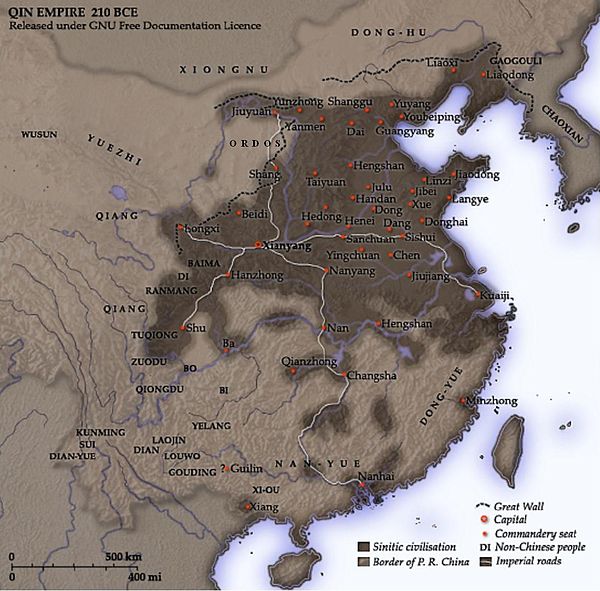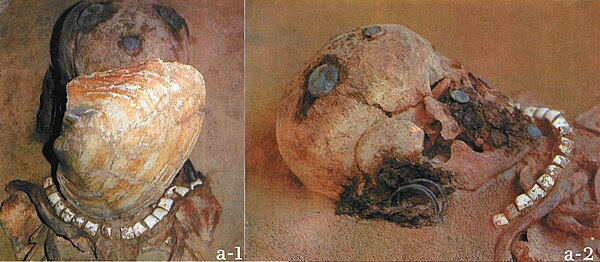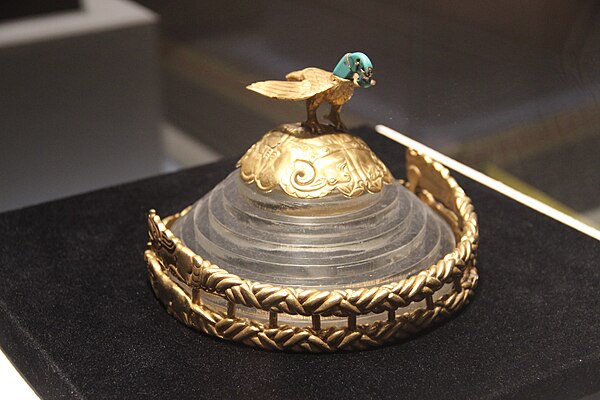Donghu people
Videos
Page
Donghu was a tribal confederation of "Hu" (胡) nomadic people that was first recorded from the 7th century BCE and was taken over by the Xiongnu in 150 BCE. They lived in northern Hebei, southeastern Inner Mongolia and the western part of Liaoning, Jilin and Heilongjiang along the Yan Mountains and Greater Khingan Range.

The Donghu were located to the northeast of Qin China in the 3rd century BCE.

Horse bit and harness ornaments. Upper Xiajiadian culture. Inner Mongolia Museum

Burial at Zhoujiadi cemetery (with and without mussel mask), an ancestor of the Donghu clan, Upper Xiajiadian culture (1000-600 BCE).

Bronze Dagger with figurine, Upper Xiajiadian culture (1000-600 BCE). Inner Mongolia Museum.
Xiongnu
Videos
Page
The Xiongnu were a tribal confederation of nomadic peoples who, according to ancient Chinese sources, inhabited the eastern Eurasian Steppe from the 3rd century BC to the late 1st century AD. Modu Chanyu, the supreme leader after 209 BC, founded the Xiongnu Empire.

A gold crown belonging to a Xiongnu king, from the early Xiongnu period. Seen at the top of a crown is an eagle with a turquoise head.

Xiongnu chief, 2nd century BCE-1st century CE. Reconstruction by archaeologist A.N. Podushkin, in the Central State Museum of Kazakhstan.

A traveling nomad family led by a man in belted jacket and trousers, pulling a nomadic cart. Belt Buckle, Mongolia or southern Siberia, dated to 2nd-1st century BC (Xiongnu period).

Belt plaque with design of wrestling men, Ordos region and western part of North China, 2nd century BC, bronze - Ethnological Museum, Berlin. According to Frankfort, the wrestlers are Xiongnu, and their horses have Xiongnu-type horse trappings.